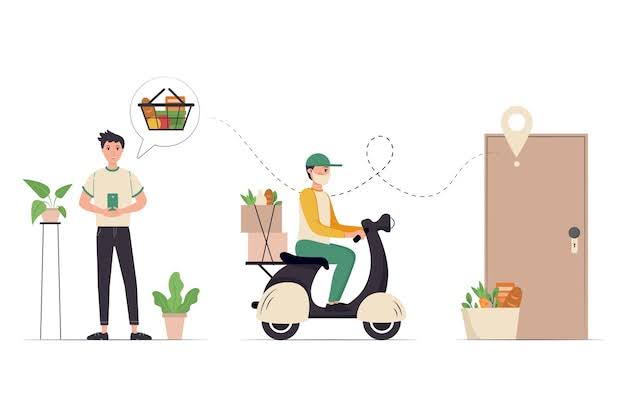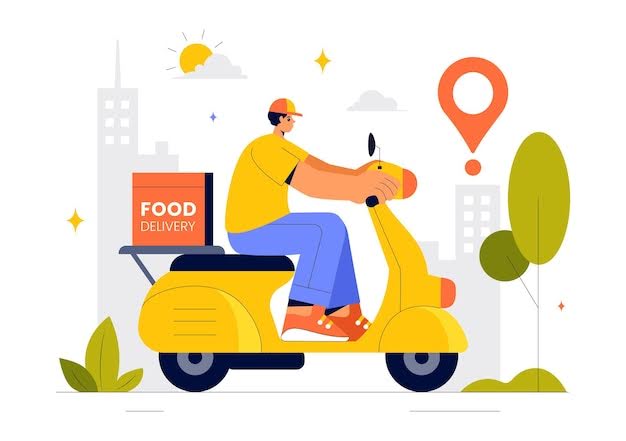Ask any restaurant operator what keeps them up at night, and you’ll often hear the same two worries: “How do I get food to customers faster?” and “How do I protect my already-thin margins?” The answer usually lives inside the restaurant’s tech stack, specifically in the food delivery management system that ties together ordering, kitchen workflows, dispatch, and customer updates.
Below, we break down ten standout solutions available to U.S. restaurants in 2025. Our lens: scalability, compliance, cost transparency, and the day-to-day practicality a busy GM or owner really needs. Let’s dive in.

1. Delivety: The White-Label Powerhouse
If you’d like the control of an in-house platform without the headache of building one, Delivety deserves your first look. The browser-based suite hits every stage of the order journey:
- Custom-Branded Ordering Site. Drag-and-drop your storefront; no app downloads required.
- Operator Dashboard and Menu Builder. Tweak specials in real time and take phone orders without hopping tools.
- Kitchen Display System (KDS). Auto-routes dishes to specific cook stations with live timers.
- Assembly Dashboard. Keeps bagging and quality checks in sync, cutting missing-item complaints.
- Courier WebApp + Route Optimization. Drivers accept jobs, optimize multi-drop runs, and feed live ETAs back to customers.
- Logistics HQ. A map-based view of orders, zones, and drivers, complete with geofencing rules.
- Reporting Suite. Drill into sales, prep times, or courier performance from the same screen.
Pricing is refreshingly clear, starting at $9/month and topping out at $99 for 10,000 monthly orders. There are no commission fees, a game-changer for restaurants tired of third-party drains on revenue. Add unlimited brands or ghost-kitchen locations under one login, and Delivety morphs into a genuinely scalable restaurant delivery management software play.
Best for: Multi-brand groups, ghost kitchens, or local chains that want to own the customer relationship end-to-end.
2. Toast Delivery Services: POS-Native Convenience
Many U.S. independents already use Toast as their point-of-sale. Activating Toast Delivery Services layers a native dispatch engine and delivery tracking onto an interface that staff recognize. Orders flow straight from the POS to the KDS to third-party courier fleets (DoorDash Drive partners by default), eliminating manual re-entry.
Key wins:
- Unified menu and pricing control across dine-in and delivery.
- Automatic tip reconciliation and driver payouts.
- One set of financial reports instead of Franken-spreadsheets.
For operators committed to Toast, this is the shortest path to integrated delivery. Drawback: You’re locked into Toast hardware and payment processing, which may not suit high-volume, multi-concept groups.
3. Otter: Marketplace Aggregator Plus Dispatch
Otter started as an “order aggregator,” pulling in tickets from Uber Eats, Grubhub, and more into a single tablet. It has since evolved into a lightweight food delivery management system with its Dispatch add-on. You can push orders to your drivers or to on-demand fleets, see all channels in a unified dashboard, and even pause menus on multiple marketplaces at once.
Highlights:
- Centralized adjustment of prep times across platforms during peak rush.
- Fee tracking that surfaces true commission costs per partner.
- Basic driver management is built on top of their tablet hardware.
Otter suits restaurants that still lean heavily on marketplace volume but need a simpler driver layer for loyalty or catering orders.
4. Shipday: SMS-Driven Last-Mile Simplicity
Shipday positions itself as “Uber for your drivers.” Operators upload orders via API, app, or CSV; drivers get SMS invites to claim and navigate deliveries. No specialized hardware, no complex onboarding. A real-time map shows where each courier is and when they’ll ring a customer’s doorbell.
Why it works:
- Low barrier for seasonal or gig drivers, just a smartphone.
- Route optimization is baked in, reducing mileage costs.
- Pay-as-you-grow pricing; free for 10 drivers per month.
For a neighborhood pizza shop looking to ditch paper ticket books, Shipday is a cost-effective first step.
5. Bringg: Enterprise-Grade Logistics
Bringg is the heavyweight option on this list. Originally built for global retailers, it offers a deep logistics engine that restaurants with multiple DCs or commissaries can tap. Expect AI-driven driver assignment, automatic smart batching, and in-depth compliance features (think alcohol ID verification workflows).
Standout functions:
- Real-time inventory visibility between hubs and kitchens.
- SLA monitoring down to the minute for national chains.
- APIs that integrate with custom mobile apps and ERP systems.
Bringg is priced accordingly; implementation projects often run six figures. But for enterprise brands seeking Amazon-style logistics, it’s among the few platforms that can truly deliver at scale.
6. FoodStorm: Catering Specialist
Delivery isn’t just burgers and fries. High-volume catering requires different tooling: lead times stretch from minutes to days, order sizes balloon, and dietary tags dictate complex prep. FoodStorm (now part of Instacart) excels here, combining CRM, production planning, and dispatch.
Why caterers love it:
- Build once, deliver many: Menu templates handle recurring corporate orders.
- Production sheets auto-generate based on confirmed headcounts.
- Integrated delivery scheduling with driver capacity caps.
If your business skews toward office platters or wedding spreads, FoodStorm will fit better than general-purpose delivery apps.

7. ChowNow Direct Delivery: Commission-Free Marketplace Alternative
ChowNow built its reputation on helping independents launch commission-free ordering. The Direct Delivery add-on brings white-label logistics via a national fleet network. Restaurants pay a flat fee per mile or fixed-zone pricing, and customers never see a third-party logo.
Key perks:
- Keep customer data emails, phone numbers, and lifetime spend, all stored in your CRM.
- Marketing toolkit includes automated email campaigns and promo codes.
- Menu sync across Google Food Ordering and social channels.
It’s a friendly stepping-stone for operators testing direct-to-consumer delivery without spinning up their driver team.
8. Onfleet: Developer-Friendly Dispatch Engine
Onfleet is beloved by tech-savvy chains that want full control over the delivery experience, from brand-specific SMS alerts to advanced heat-mapping. Its APIs let developers embed driver ETA widgets right on a restaurant’s order-tracking page.
Power features:
- Sophisticated auto-dispatch rules that consider driver skill, traffic, and customer priority tier.
- Barcode scanning for item verification is useful for high-value wine or grocery orders.
- Multi-locale driver app available in 90+ languages.
Because Onfleet is dispatch-only, you’ll still need an ordering front end and KDS, but for brands that’ve built proprietary POS or loyalty apps, it drops in cleanly.
9. DoorDash Drive: White-Label Fleet on Demand
Need drivers tonight but don’t want to sign long-term contracts? DoorDash Drive offers a fleet-as-a-service model. Your ordering site or POS sends a delivery request via API; a Dasher shows up, and the customer never knows DoorDash was involved.
Strengths:
- Nationwide coverage is helpful for chains entering new markets.
- Flat delivery fee pricing you can absorb or pass to guests.
- Built-in alcohol compliance with ID scanning.
The trade-off is limited control over driver branding and customer communication. Still, for overflow or “surge” capacity, many restaurants keep Drive in their back pocket.
10. Revel Driver XT: POS and Delivery in One iPad
Revel Systems’ Driver XT module adds delivery oversight to its popular iPad POS solution. Because everything sits on a single database, menu changes, price updates, and inventory counts are instantly reflected in both dine-in and delivery channels.
Notable features:
- Live driver tracking for customers via text links.
- Driver timecards and mileage logs feed into payroll.
- Heatmaps of delivery demand help schedule staffing.
Revel’s all-in-one appeal makes sense for fast-casual concepts opening multiple storefronts that value unified reporting and hardware.
How to Choose the Right Platform
With so many shiny platforms vying for your attention, the selection process can feel paralyzing. Use these five filters to cut through the noise:
Ownership vs. Outsourcing
Decide if you want to own 100 % of the customer journey (white-label like Delivety) or leverage a hybrid marketplace model (e.g., ChowNow with third-party fleets).
Scope of Features
A true restaurant delivery system software should cover ordering, kitchen, dispatch, and analytics. If you already have a killer POS, you might only need last-mile tools like Onfleet.
Volume & Growth Plans
A single-unit diner pushing 300 tickets a month has very different needs from a 20-location taco chain. Double-check pricing tiers and server capacity for peak holidays.
Compliance and Integrations
Alcohol delivery? State-specific labor rules? Look for built-in ID scanning and audit logs. APIs matter if you’re syncing loyalty programs or enterprise ERPs.
Total Cost of Ownership
Watch for hidden per-order fees, hardware leases, or maintenance contracts. Transparent subscription models (Delivety, Shipday) make forecasting simpler.
Final Thoughts
Delivery is no longer a side hustle for restaurants; it’s a core profit center that demands the same rigor as your fryer station or inventory count. The right food delivery management system doesn’t just push orders out the door faster; it safeguards margins, keeps guests informed, and frees staff from tablet-tapping chaos.
Whether you crave the white-label power of Delivety, the POS tightness of Toast, or the enterprise muscle of Bringg, the tools on this list represent the best of what 2025 has to offer. Evaluate them against your operational realities, run pilot programs, and don’t be afraid to mix and match. Your customers won’t care which platform you picked; they’ll remember the hot, accurate meal that arrived exactly when promised.







